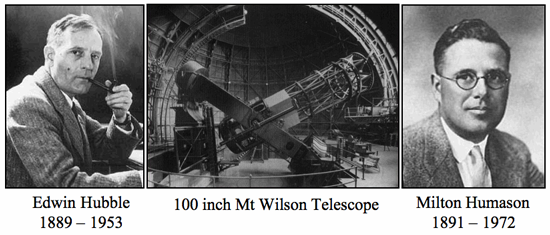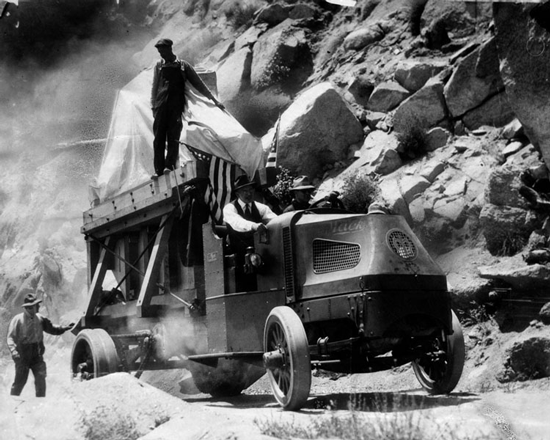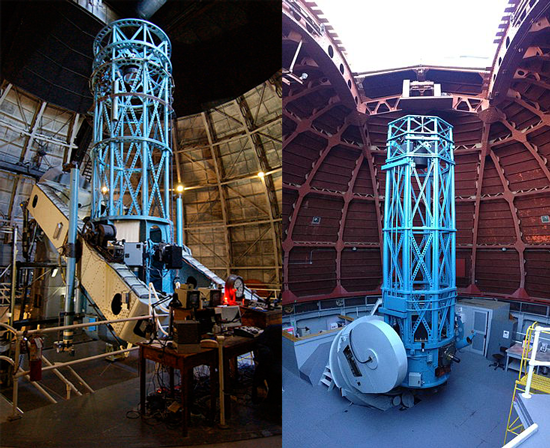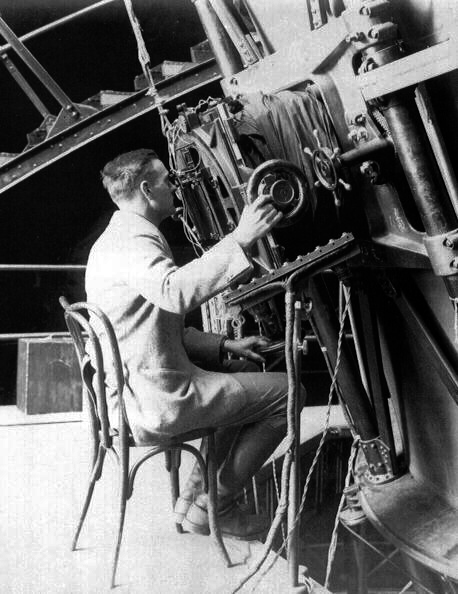Milton Humanson
by Andrew Boyd
Today, quiet persistence. The University of Houston's College of Engineering presents this series about the machines that make our civilization run, and the people whose ingenuity created them.
Edwin Hubble is without question one of the most famous astronomers in history. With stellar credentials from the University of Chicago, Hubble not only discovered the universe is expanding — leading to the Big Bang Theory — but he quantified the rate of expansion through a law that bears his name. Today, however, we don't focus our sights on the luminary Hubble, but instead on his collaborator, Milton Humason.

Edwin Hubble and his collaborator Milton Humason. Photo Credit: Michael Richmond
Humason was born in 1891 in the tiny town of Dodge Center, Minnesota. At age fourteen his family moved to California, whereupon he attended camp at Mount Wilson. It was a period of great excitement as preparations were being made for the arrival of a new, massive telescope.

100 inch telescope being carried to Mt. Wilson. Photo Credit: Wikimedia Commons
Enthralled by what he encountered, Humason left high school to work for a year, leading mule-powered wagons laden with building supplies up the mountain. One year stretched into five, at which point the young man met his wife-to-be, Helen Dowd. They married, and Humason took a job as a ranch foreman east of Los Angeles.
Humason never returned to high school nor any other school for that matter. But after seven years the call of the observatory proved too strong. When the observatory's engineer, who also happened to be Humason's father-in-law, told the twenty-six year old about a job as janitor, Humason jumped. It wasn't just a desire simply to be near the telescope. High in the mountains, tucked away from civilization, Humason knew that even an aspiring janitor could be called upon to help out with equipment.

100 (left) and 60 (right) inch telescopes. Photo Credit: Wikimedia Commons
And that's exactly what happened. Humason became adept at manipulating the telescopes to take pictures — a meticulous process given the motion of the stars. Within three years Humason was promoted from janitor to staff, a controversial step given competition for the job and Humason's lack of credentials. But Humason didn't disappoint. He was not only good with photography, but with the endless hours spent examining photographic plates looking for minute details.

Edwin Hubble looking through a telescope. Photo Credit: Deskarati
Humason worked closely with Hubble for many years, providing much of the spadework contributing to Hubble's success. But while Humason never achieved the stature of Hubble, he was nonetheless greatly respected by his peers. Hubble and Humason's names appeared jointly on a long list of publications, and after decades of spending cool, dark evenings under the stars, Humason was appointed Secretary of the Observatory. Here he devoted much of his time to answering letters from people all over the world in all walks of life. His correspondence shows a man whose patience watching the stars translated into a cordial patience with the many viewpoints he encountered.
Humason retired in 1957 at the age of sixty-six, settling into a small town on the Northern California coast. There he and wife Helen lived together quietly and happily for their remaining years.
I'm Andy Boyd, at the University of Houston, where we're interested in the way inventive minds work.
(Theme music)
For more on Milton Humason, Click here.
This episode first aired on February 5